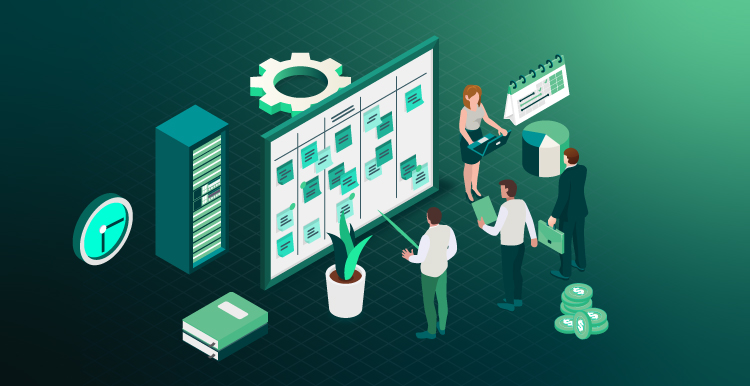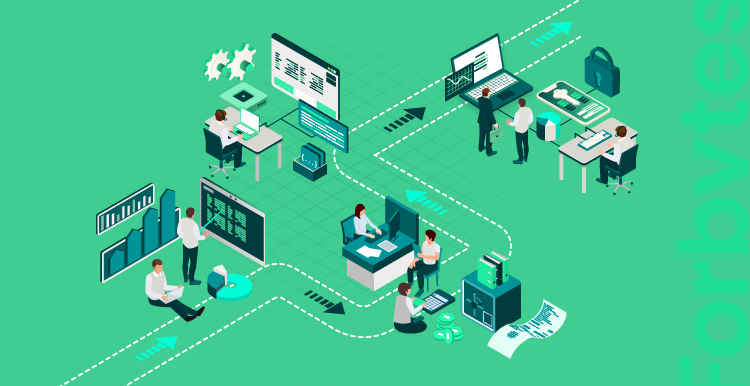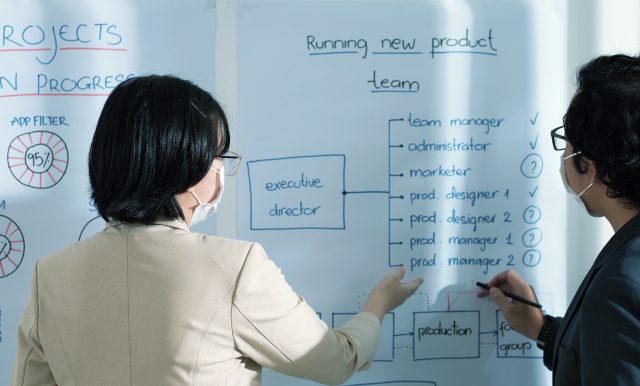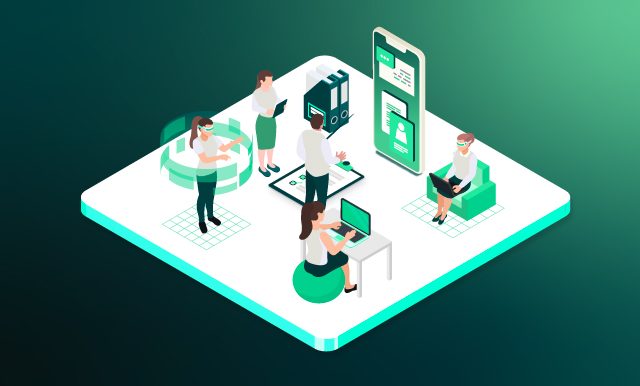Organizations are under pressure to continuously update and improve their applications to meet the ever-changing needs of customers and businesses. But how can they ensure that their modernization efforts are strategic and aligned with their overall business goals? The answer is to create a comprehensive modernization roadmap.
In this article, we will uncover the critical steps you need to take to create an application modernization roadmap.
What Is an Application Modernization Roadmap
The term application modernization can mean different things to different organizations. In general, application modernization refers to updating legacy applications to take advantage of modern technology. This can involve anything from updating the user interface to migrating the underlying codebase to a cloud-native platform.
Organizations typically undertake application modernization projects for one of two reasons. First, they may need to update an app to keep up with changing business needs. For example, a company may need to add new features or integrations to an existing application. Second, they may need to update an application to take advantage of new technological capabilities. For example, a company may want to migrate an on-premises application to the cloud to improve performance or reduce costs.
In either case, it’s vital for organizations to create a clear roadmap for their application modernization projects. This roadmap should outline the project’s goals, the resources required, and the timeline for implementation. Without a clear roadmap, organizations will likely run into problems during the modernization process. As a result, they may end up with an updated application that doesn’t meet their needs or that is more expensive than they anticipated.
Why Is an Application Modernization Roadmap Important?
As technology evolves, so too must the applications that businesses rely on to run their operations. Over time, code bases can become outdated, making it difficult to add new features or keep up with changing user demands. In addition, as hardware and software platforms evolve, applications may need to be recompiled to run on new architectures.
As a result, application modernization can be an essential part of ensuring that businesses can continue to take advantage of new technologies and maintain a competitive edge. By modernizing legacy applications, businesses can enjoy the increased performance, improved security, and expanded functionality. In addition, modernized applications can be more easily integrated with other business-critical systems.
How Roadmaps Improve Application Modernization
Application modernization can involve several different initiatives, such as moving to the cloud, refactoring code, or adopting microservices. Roadmaps can be a valuable tool in planning and executing an application modernization strategy. A roadmap provides a high-level overview of the journey from the current state to desired future state. It can help to identify dependencies and key milestones and can serve as a basis for creating more detailed implementation plans.

By taking the time to develop a roadmap up front, businesses establish:
- Clear product vision. With a clear vision, it can be easier to set objectives and decide which technologies to use and how to implement them. A good plan will also help you communicate your vision to stakeholders and get buy-in for your project.
- Clear objectives and priorities. A key benefit of having explicit goals and priorities when modernizing your applications is that it enables you to focus your efforts on the areas with the most significant impact. By mapping out precisely what you hope to achieve, you can ensure that your team stays focused and on track.
- Effective communication. A clear and concise plan can provide a common understanding of the project’s goals and objectives, as well as the roles and responsibilities of each team member. This, in turn, will help keep the project on track by providing regular updates on progress and identifying any potential risks or challenges.
- Reasonable expectations. One of the most important aspects of any modernization project is setting realistic expectations. Doing too much too quickly can lead to cost overruns and schedule delays. It’s important to take a phased approach, identifying the most critical applications and prioritizing those for modernization first.
How to Build an Effective Roadmap for Application Modernization
Application modernization can be a complex and daunting task. It’s essential to take the time to develop a comprehensive and practical roadmap that takes into account your specific business goals, technical requirements, and budget. Below are the major steps to building your application modernization roadmap.
Goals Setting and As-Is Analysis
Any successful application modernization initiative begins with a clear understanding of where an organization is today and where it wants to be in the future. This requires a systematic as-is analysis of the existing application portfolio, as well as a vision-setting exercise to identify desired business outcomes.
The first step in the as-is analysis is to inventory all applications in the portfolio and assess their current state. This includes understanding how each application is used, what technologies it is built on, and how it integrates with other applications. Once this baseline data has been collected, it can be used to identify gaps and areas for improvement.
Businesses should prioritize transformations that will improve processes after compiling a list of applications ready for modernization. Important queries include:
- What outdated legacy systems are there?
- Which legacy programs are causing a drop in performance and productivity among employees?
- What effects do outmoded programs and systems have on the way customers are treated?
The second step is to develop a clear vision for the future state of the application portfolio. This begins with a deep understanding of the business goals that the organization is trying to achieve. Once these goals have been identified, they can be used to guide the selection of target mobile application architectures. The resulting roadmap will provide a clear path for modernizing the application portfolio and achieving desired business outcomes.
Target Operation Modeling and Prioritization
To prioritize your application modernization roadmap, you must consider various factors, including your current IT landscape, business objectives, and budget. Once you have assessed these factors, you can then begin to target which operations you would like to modernize first. An excellent way to do this is by modeling your target operations against best practices for application modernization. This will help you identify areas where your processes can be improved and make better decisions about which technologies to adopt. By creating a comprehensive roadmap, you can ensure that your application modernization initiative is successful.

The first step is to prioritize your applications:
- What are the most critical business functions that your applications support?
- What are the most heavily used applications?
- What applications are the most costly to maintain?
Once you have prioritized your applications, you can begin to target which ones will be modernized first.
The second step is to model the target operations for each application:
- What does the modernized application need to be able to do?
- What are the performance requirements?
- What are the security and compliance requirements?
By understanding the target operation for each application, you can better determine what technology and architecture changes are required.
Finding Cutting-Edge Solutions
As any organization knows, IT solutions are continuously evolving. To keep up with the latest industry innovations, it is essential to review the market for available IT solutions periodically.
Businesses must identify a “golden ratio” where technology and organizational objectives are perfectly aligned. Finding solutions that address both present and future needs, however, might be challenging due to the oversaturation of the markets for digital operations. The company should concentrate on the following when investigating new technologies:
- Agility\Scalability;
- Expenses Control;
- Adaptability Features;
- Data Security.
Microservices, DevOps, cloud transformation, low-code application platforms, containerization, and adaptable APIs are recent technologies that enable application modernization. Containerization and microservice architecture are particularly crucial to the modernizing of applications. Because the protocols for microservice architecture are simple, businesses may quickly create and maintain new applications, increase the effectiveness of their software development processes, and strengthen the resilience of mission-critical operations.
Operating system virtualization in the form of containerization entails leveraging a shared OS to run programs in separate user contexts. Despite the underlying architecture, this helps to ensure that important business apps function the same. Remember that finding technology-driven and operational solutions is essential to developing a long-term strategy for digital transformation.
Deployment and Further Maintenance
Once you’ve completed the above-mentioned steps, it’s time to start putting your plans into action. Implementing an application modernization roadmap is a complex and ongoing process. To maximize the benefits of modernization, it is essential to carefully consider the specific needs of your organization and your goals for the future.
The implementation phase will vary depending on the complexity of the updates required, but it typically involves some combination of infrastructure updates, coding changes, and testing. Once all the updates have been completed and tested, you’ll need to put an ongoing management plan in place to ensure your applications remain up-to-date. This will involve regular monitoring and management updates as new vulnerabilities are discovered.
To track development and get input from end users during the deployment phase, you should schedule frequent workshops. By using a comprehensive strategy, you can be sure that your modernization roadmap will improve employee and customer experiences, spur revenue development, and eliminate time- and money-wasting back- and front-end inefficiencies.
Creating a Risk Management Plan
The application modernization roadmap’s risk management plan is designed to identify, assess, and prioritize risks associated with modernizing legacy applications. The goal is to minimize the impact of risks on the roadmap and maximize the chances of success. To that end, the plan includes three key components: identifying risks, assessing risks, and prioritizing risks.
The first step in managing risk is to identify potential sources of risk. This includes internal and external factors that could jeopardize the success of the modernization effort. Common sources of risk include changes in business requirements, inadequate resources, technological obsolescence, and incompatible dependencies. Once potential sources of risk have been identified, they must be assessed in terms of their likelihood and potential impact. This information prioritizes risks, with the most severe risks receiving the highest priority.
The third and final component of the risk management plan is implementing mitigating strategies. This may involve making changes to the application modernization roadmap itself or taking other steps to reduce the likelihood or impact of risks. Common mitigating strategies include adding buffers to timelines, increasing budget estimates, and developing contingency plans. By following these steps, the application modernization roadmap’s risk management plan can help ensure a successful outcome for the project.
Setting KPIs and Other Metrics
As with any business project, it is crucial to establish critical assessment and success metrics at the outset of an application modernization project. This will give you a clear understanding of what needs to be achieved and enable you to track progress against specific objectives. Some important metrics to consider include the following:
- The total number of applications that need to be modernized;
- The timeline for completing the project;
- The cost savings that the project will generate;
- The increase in productivity that the project will achieve;
- The decrease in risk that the project will achieve.
By tracking these metrics throughout the duration of the project, you will be able to assess its progress accurately and identify any potential problems. This will ensure that the project stays on track and ultimately achieves its objectives.
Planning for Cutover
One of the most important aspects of any application modernization project is the cutover plan. This plan should be designed to ensure a smooth transition from the old system to the new, with minimal disruption to users.
There are a few things to keep in mind when planning for a cutover. First, you need to make sure that all the data from the old app has been migrated to the new one. Second, you need to test the new app thoroughly to make sure it’s ready for production. And finally, you need to have a plan for how you’ll handle any issues that come up during or after the cutover. By planning carefully for cutover, you can make sure your application modernization project is successful.
Final Thoughts
Roadmaps are an essential tool for any IT department looking to modernize its legacy applications. A roadmap provides a clear and concise overview of the modernization process, outlining the goals, timeline, and resources required. It also serves as a communication tool, helping ensure everyone involved is on the same page. Furthermore, a roadmap can be used to track progress and identify potential risks and issues. Without a well-written roadmap, it would be very difficult to navigate the complex process of legacy application modernization successfully. Therefore, if your IT department is considering embarking on this journey, create a comprehensive and thoughtfully-crafted roadmap.
Need help updating or developing your software solutions? Forbytes is a full-cycle software development company with a team of highly skilled and experienced engineers who are capable of building comprehensive digital solutions. Contact us today to discuss your specific needs, and let us show you what we can do.

Our Engineers
Can Help
Are you ready to discover all benefits of running a business in the digital era?

Our Engineers
Can Help
Are you ready to discover all benefits of running a business in the digital era?







